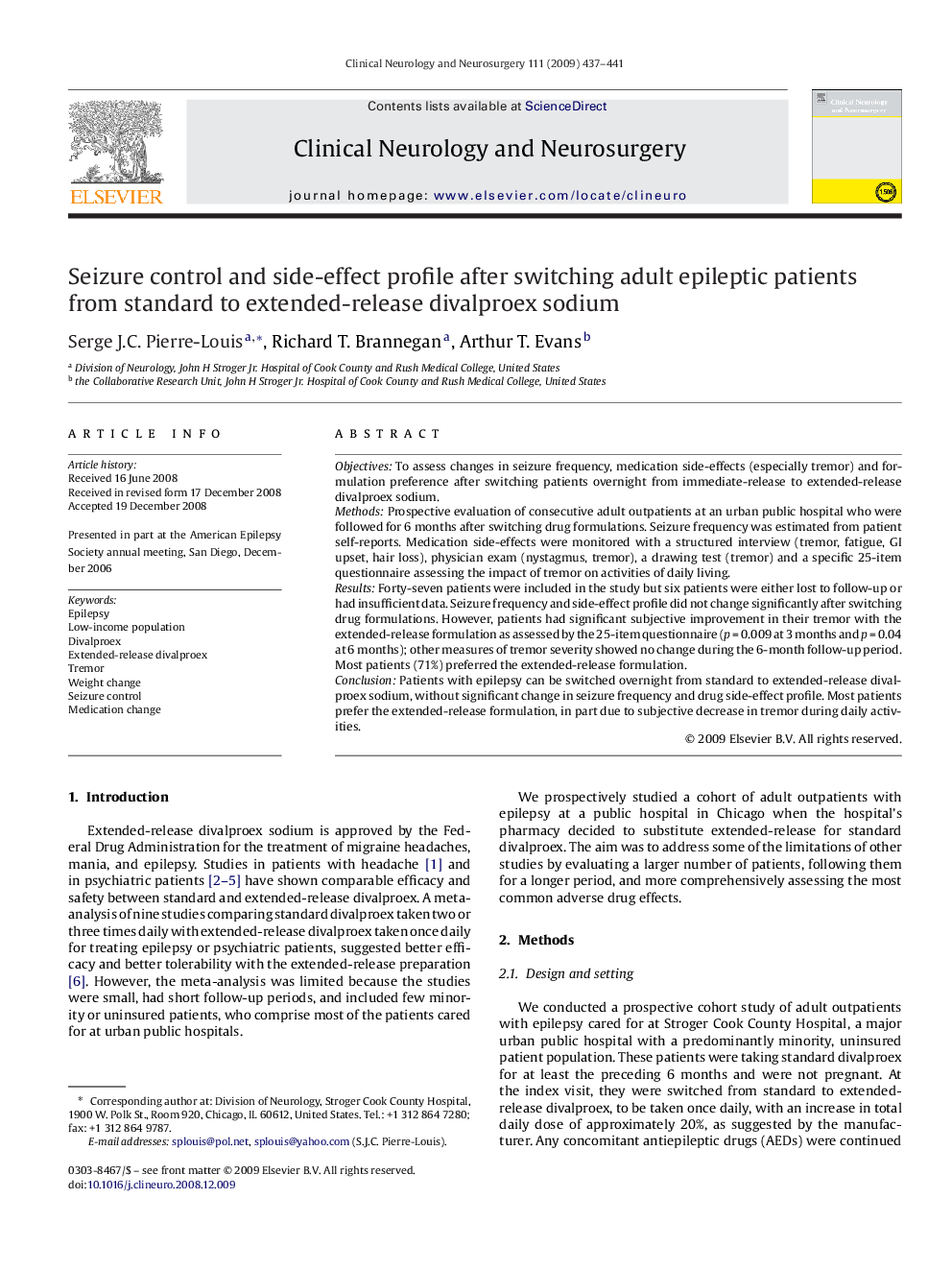| Article ID | Journal | Published Year | Pages | File Type |
|---|---|---|---|---|
| 3041657 | Clinical Neurology and Neurosurgery | 2009 | 5 Pages |
ObjectivesTo assess changes in seizure frequency, medication side-effects (especially tremor) and formulation preference after switching patients overnight from immediate-release to extended-release divalproex sodium.MethodsProspective evaluation of consecutive adult outpatients at an urban public hospital who were followed for 6 months after switching drug formulations. Seizure frequency was estimated from patient self-reports. Medication side-effects were monitored with a structured interview (tremor, fatigue, GI upset, hair loss), physician exam (nystagmus, tremor), a drawing test (tremor) and a specific 25-item questionnaire assessing the impact of tremor on activities of daily living.ResultsForty-seven patients were included in the study but six patients were either lost to follow-up or had insufficient data. Seizure frequency and side-effect profile did not change significantly after switching drug formulations. However, patients had significant subjective improvement in their tremor with the extended-release formulation as assessed by the 25-item questionnaire (p = 0.009 at 3 months and p = 0.04 at 6 months); other measures of tremor severity showed no change during the 6-month follow-up period. Most patients (71%) preferred the extended-release formulation.ConclusionPatients with epilepsy can be switched overnight from standard to extended-release divalproex sodium, without significant change in seizure frequency and drug side-effect profile. Most patients prefer the extended-release formulation, in part due to subjective decrease in tremor during daily activities.
